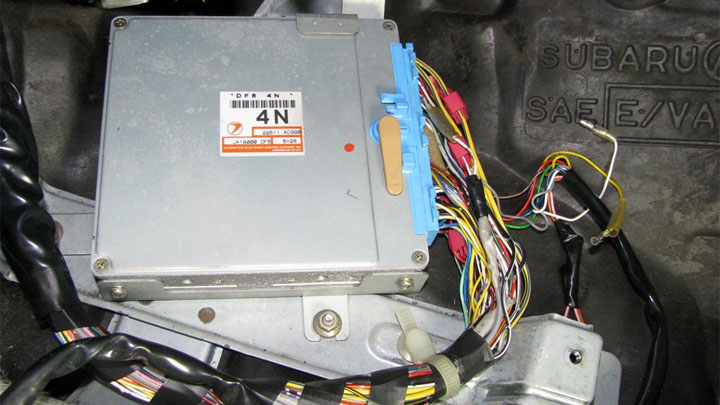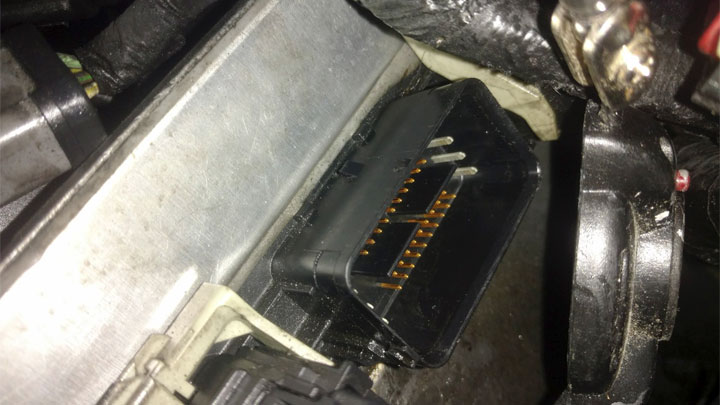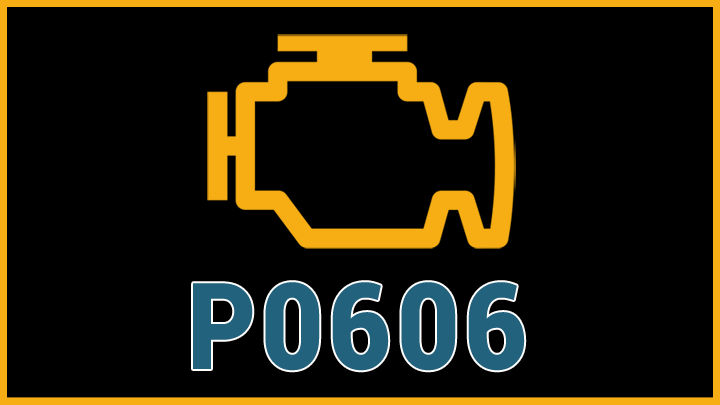Last Updated on November 16, 2022
Nobody ever wishes to experience vehicle issues or breakdowns while traveling from one point to the next. However, in certain cases, problems of this nature are simply unavoidable. When the unfortunate does occur, one is left to determine how best to remedy such issues, by the most expedited means possible.
Luckily, in many cases, the root cause of our troubles is relatively minor and can be remedied in minutes. However, in other instances, the issue at hand is somewhat more involved, requiring the further analysis of all pertinent data. Luckily, with the use of a quality scan tool, one can uncover any offending fault codes, thereby gaining a point on which to focus their diagnostic efforts.
One such fault code, which tends to be relatively definitive in nature, is DTC P0606. This code is indicative of ECM (Engine Control Module) or PCM (Powertrain Control Module) related issues and should be taken quite seriously whenever stored. A failure to heed the warning that this fault code provides can leave you walking home in a hurry.
Read on to learn more about diagnostic fault code P0606, as well as how to troubleshoot such issues should they arise in the future.
What Does Code P0606 Mean?
Diagnostic fault code P0606 is indicative of a functional issue related to a vehicle’s ECM/PCM. This implies that your vehicle’s ECM/PCM is functioning in a manner other than that which is expected. While this fault often serves as a “death” code for a vehicle’s ECM/PCM, power or ground input problems can also be to blame.
To better understand this point, one must first understand the function of a vehicle’s ECM/PCM. This controller is used to monitor various inputs from an engine’s sensors, and apply logic to create a series of outputs used for control purposes, all in real time.
Essentially, an ECM/PCM is an on-board computer, capable of performing a series of complex mathematical equations to facilitate seamless engine operation.
Additionally, a vehicle’s ECM/PCM communicates with other vehicle mounted modules, through a built-in OBD-II communications network. This communication allows for the more streamlined integration of various vehicle functions.
For instance, a vehicle’s TCM (Transmission Control Module) relies upon data from an engine’s controller (ECM/PCM), to determine applicable shift points for a given situation.
In the case of DTC P0606, the ECM/PCM has self-diagnosed itself as being completely, or partially inoperable. As such, any number of vehicle functions are likely to suffer, presenting the possibility for an endless array of associated symptoms.
Related: P0603 Code, P2509 Code, U0100 Code
Symptoms of Code P0606

Diagnostic fault code P0606 is often accompanied by a wide range of symptoms, many of which tend to be relatively concerning in nature. However, on the other hand, there are rare instances in which DTC P0606 will be stored, without the accompaniment of additional symptoms.
The following are several of the most common symptoms associated with diagnostic trouble code P0606.
- Check engine light
- Failure to crank
- Crank without start
- Erratic fan actuation
- Intermittent stalling
- Unusual idle
- Random misfiring
- Hard or improperly timed shifts
- Increased fuel consumption
Causes of Code P0606

The potential causes of diagnostic trouble code P0606 are relatively limited. However, one must be sure in their diagnosis or else risk the unnecessary replacement of exceedingly expensive components.
The following are several of the most common causes of DTC P0606.
- Faulty ECM
- Faulty PCM
- Lack of ECM/PCM supply power
- Lack of ECM/PCM supply ground
Is Code P0606 Serious?
Diagnostic fault code P0606 is extremely serious in nature, and should serve as an immediate call to action for motorists. This stems from the fact that DTC P0606 refers directly to one or more ECM/PCM related issues.
Since a vehicle’s ECM/PCM is responsible for a near-limitless number of engine functions, as well as communication between corresponding modules, driveability-related symptoms can be severe and unpredictable.
In the most dire of cases, DTC P0606 related issues can actually cause a vehicle to stall while in traffic, presenting a rather hazardous situation. Likewise, this condition can also leave you stranded, due to the high instance of no start/ no crank symptoms associated with diagnostic trouble code P0606.
In any case, the root cause of DTC P0606 should be diagnosed and remedied at the first available opportunity. Once this code is uncovered, the affected vehicle should be removed from service and parked until a satisfactory resolution can be reached.
If you don’t feel comfortable tackling such repairs yourself, please seek the advice of an automotive industry professional as soon as possible.
How to Fix Code P0606

The following steps will assist you in diagnosing and repairing the root cause of your vehicle’s P0606 diagnostic fault code. As always, consult factory-specific service literature for your particular vehicle before attempting any such repairs.
#1 – Check for Additional DTCs
Before beginning the diagnostic process, check for the presence of any additional diagnostic trouble codes. Any codes that are present should be thoroughly diagnosed and remedied before proceeding.
#2 – Check for Supply Power to ECM/PCM
You will begin by checking for supply power to your vehicle’s ECM/PCM. Consult a factory-specific wiring diagram for your vehicle when attempting to locate the supply power wire for your vehicle’s control module.
The wire in question should have a positive feed of 12.6V or more at all times with the key in the “on” position. If this is not the case, further inspection of the vehicle’s main power distribution harness will be required.
#3 – Check for Supply Ground to ECM/PCM
An ECM/PCM’s ground (-) supply is just as vital as its aforementioned power supply. A loss of ground will result in a loss of controller function. Therefore, it is essential to verify that your vehicle’s ECM/PCM is receiving a suitable ground.
This can be concluded with the use of a factory-specific wiring diagram, and a quality multimeter. A lack of ground supply will require additional inspection of your vehicle’s ground distribution circuit.
#4 – Follow Factory Protocols
While the diagnostic steps related to fault code P0606 are similar to this point, no matter the vehicle, many manufacturers specify their own guidelines for diagnosis when condemning an ECM/PCM.
It is extremely important to follow these steps in their entirety, before jumping to any foregone conclusion. Doing so will prevent the unnecessary replacement of a costly control module, in the event of a misdiagnosis.





Toyota Corolla 2004, when it starts it won’t accelerate, I have diagnosed the car it shows ecm/pcm, I bought new Ecm still the fault still come up, please an answer to it. Thanks
Check your grounds and your connections to the ECU. Does anything look corroded? Are any of the pins on the ECU connector dirty?